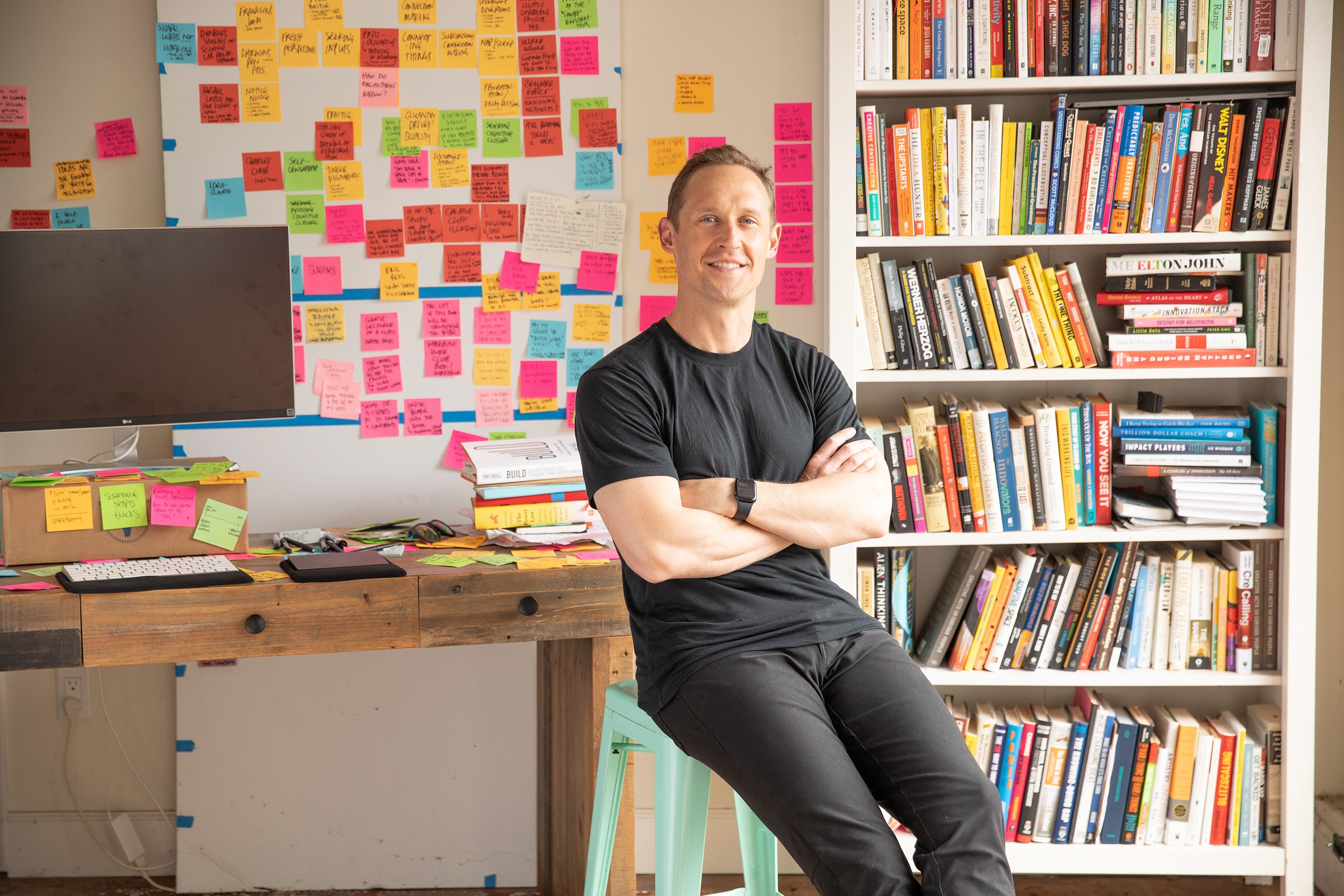
Methods of the Masters
A blog on the art & science of creative action.
Embrace the Useless: Unlock Innovation Through Unproductive Moments
Kevin Kelly is the co-founder of WIRED magazine. Long-hailed for his counter-intuitive business wisdom, he did NOT disappoint on a recent episode of Beyond the Prompt. Here, he shares an overlooked secret to courting break throughs and driving joy.
Allow Folks to Play
If innovation is a numbers game, subject to considerable odds, then how can a leader bend the odds? IDEO’s Brendan Boyle says play is a key lever to drive the breadth of experimentation required to succeed.
Grant Permission to Deviate
“Smarter is better.” It’s hard to imagine a more sound premise. And yet, that’s not what the data suggest, nor what the history of innovation teaches. What we really need is permission to deviate from the smart approach.
Try To Nap
As valuable as napping is as a tactic for courting breakthroughs, the nap itself is unnecessary: it’s the honest attempt at sleep that opens the floodgates.
Don’t Wait Until You’re “Qualified”
Cartoonist and storyteller Mo Willems provides the key to overcoming imposter syndrome. You’ve got to do the thing you aren’t qualified to do, in order to be qualified to do it.
Reject the Tyranny of Efficiency
One of the greatest challenges on the journey to creative mastery is that the “rules” of productivity. Stories from Seinfeld and others encourage me to persist in the wrong direction.
Explore Blind Alleys
What do Elon Musk and Albert Einstein have in common? Both of them were willing to examine things that other people dismissed as too trivial to warrant their attention.
Break Smart Rules
The rules for what smart people are supposed to do are often at odds with what those same smart people do to court a breakthrough. What gives?
Provoke Yourself
What makes an idea a good idea? Research suggests that the best idea — irrespective of commercial merits — is actually the one that provokes thinking the most.
Imitate the Masters
Frank Lloyd Wright is one of the most celebrated architects of the twentieth century. I was delighted to discover two routine habits that contributed to his breakthrough thinking.
Look for What’s Right
The definition of “genius” changes as teams shift between convergent and divergent modes — and what gets rewarded should, too.
Keep The Night Watch
B.F. Skinner’s strict working habits reveal not only how he became such a prodigious writer, but also how he became such an inventive researcher: he made the most of his nights!
Keep A Junk Pile
How do you increase the velocity of experimentation? According to Thomas Edison, “To invent, you need a good imagination and a pile of junk.”
Block Time To Think
Lin-Manuel Miranda shares a key insight from the process of writing Hamilton. His experience resonates with countless other innovators: make time to think.
Get Outside The Box
The need to “think outside the box” is a common refrain.
But how does one do it?
It’s not nearly as complicated as you might think.
Think Different
“Smarter is better.” It’s hard to imagine arguing with this premise. And yet, that’s not what the data suggest, and it’s not what the history of innovation teaches us, either. What we really need is permission to do the dumb stuff geniuses do.
Be Inefficient
One of the greatest challenges on the journey to creative mastery is that the “rules” of creative genius fly in the face of the normal, smart thing to do. Stories from Seinfeld and others encourage me to persist in the wrong direction.
Treasure The Mess
“Who in their right mind would work in such conditions???” I often think to myself… And then that very, messy environment delivers an unexpected connection at the perfect time, and I remember: me.


















